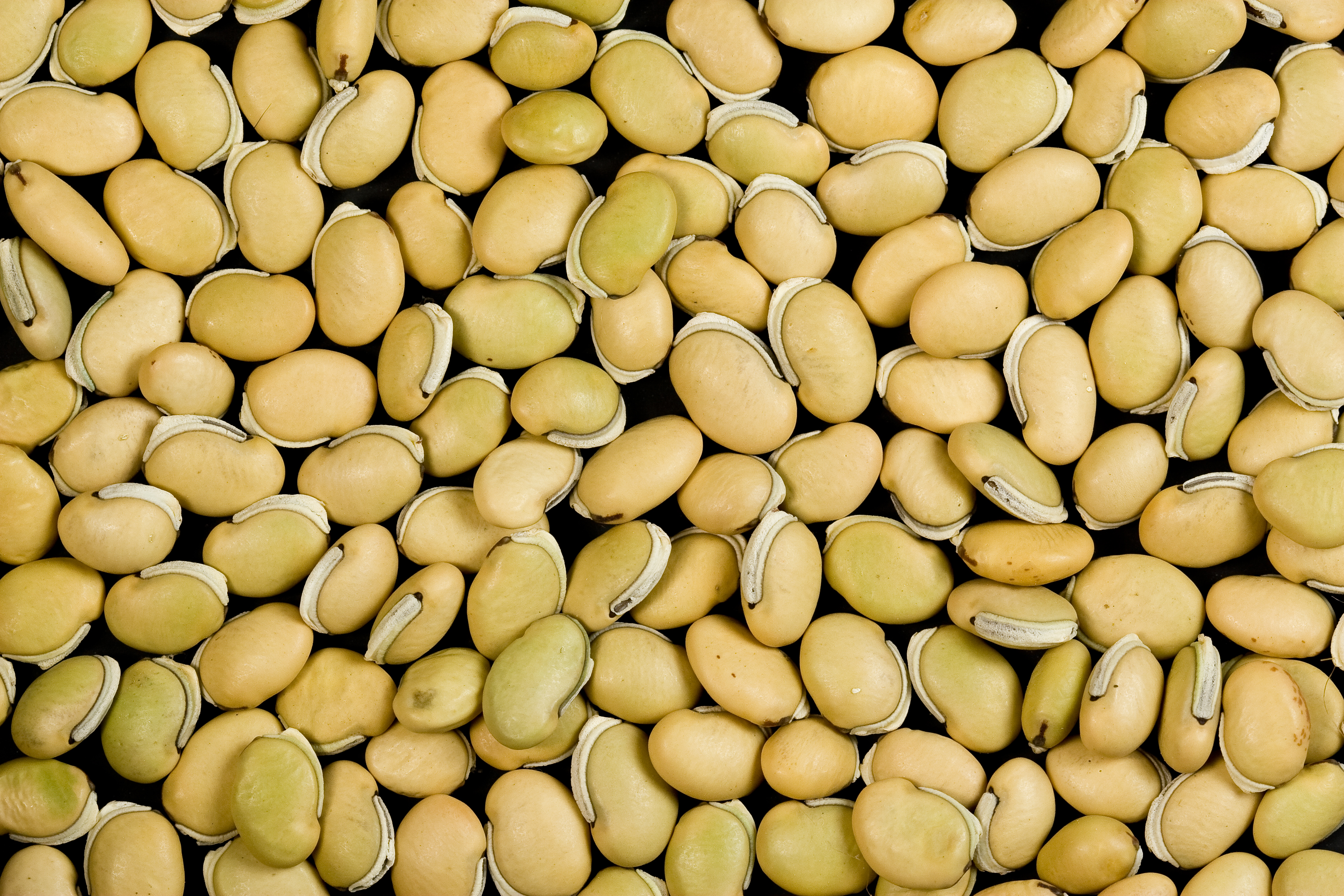All my children will learn how to cook beans. Beans are economical, healthy, and delicious. They’re a great platform for trying out new flavors. Here’s my approach to beans.

By Sanjay Acharya (Own work) [CC-BY-SA-3.0 (http://creativecommons.org/licenses/by-sa/3.0) or GFDL (http://www.gnu.org/copyleft/fdl.html)], via Wikimedia Commons
Bean cooking fact
This is the most important fact of bean cookery:
Cooking dry seeds includes two different processes: getting water into the seeds to moisten their cell walls and starch, and heating them through to soften their interior. Seeds take much longer to absorb water than they do to heat through, especially if they have intact seed coats (p. 352, Keys to Good Cooking).
Crunchy beans are gross. The traditional aid to cooking is to soak beans before cooking so that the beans get a head start in taking up water. This helps deal with the fact that it takes more time for a bean to hydrate than it does to heat through.
I used to be a strong advocate of soaking — even brining — my beans. However, I don’t find it’s worth the refrigerator space when it’s possible to get good results in the pressure cooker. The process is simple: cook and season the beans in the pressure cooker, prepare seasonings in a separate saucepan, and combine the two. I give both the pressure cooker recipe and a few seasoning examples below.
Basic beans
I measure my beans the same way I cook my rice: with a scale. I find it convenient. In case you don’t have a scale, these websites and some math suggest the following ratio: 1 cup dried beans to 3 cups water to 1/2 tbsp salt to 1 tsp sugar. If you’re measuring as below, something like X = 400 is enough for two people and a toddler.
One last note, if I know I’m going to cook a Mexican- or similar-type dish with the beans, to the pressure cooker I add 1 tsp dried epazote for every 100 grams (1/2 cup) dried beans.
Ingredients
- X grams dried beans
- 4 * X grams water
- 5 * X * 1.0% grams salt
- 5 * X * 0.4% grams sugar
Procedure
- Wash the beans in a bowl and discard the water. Pick out broken or shriveled beans, as well as small stones. Yes, I’ve found small stones before.
- Add all the ingredients to to pressure cooker. Bring liquid to almost boil, cover, and cook at 15 psi for an hour. Natural release.
- Pour into storage container, cool on counter, and refrigerate.
Garlicky white beans
Plain beans are hearty but tend to the boring. Here’s one way to flavor them. The recipe below is adapted from Lidia Bastianich’s Lidia’s Family Table. There’s hardly anything to it.
Note that the two recipes below can be prepared with beans from the refrigerator or beans straight from the pressure cooker.
It’s worth experimenting with the garlic to learn just how brown you like it. Marcella Hazan strongly prefers a toasted golden. I’m happy with a wide range. Toasted golden is pleasant; very deep brown is also nice, reminding me of Filipino food.
Finally, it’s possible to cut the oil to 2 tablespoons. Since I often substitute beans for meat as my protein at dinner, I’ll compensate by adding more oil to improve taste and texture.
Ingredients
- One portion cooked white beans
- 1/4 cup olive oil
- 6 cloves garlic, finely chopped
- Dash red pepper flake
- Salt and red pepper flake, to taste
Procedure
- Sweat the onion in the olive oil in a small sauce pan. I use a 2-quart saucepan at home. Add the garlic and red pepper flake. Cook until the garlic is a pale golden.
- Add beans to the sauce pan. Stir to distribute the oil and other ingredients throughout the beans. Mash if desired. Correct seasoning.
Refried beans with epazote and habanero
I first appreciated beans when cooking out of Rick Bayless’s Mexican Kitchen. The recipe below, from Maricel E. Presilla’s Gran Cocina Latina (p. 276), is adapted to my lazy man’s method, tastes, and pantry.
Interestingly, my Mexican friends don’t like to cook beans for guests because beans are known as “poor-people” food. Who knows how representative these friends are. For what it’s worth, there’s a related phenomenon in the Philippines. Filipinos in the provinces will serve canned American food to guests instead of fresh produce because canned goods are considered luxury items. (Beyond anecdote, see p. 104 of Memories of Philippine Kitchens.) Anyway, I’m happy to be known as a bean-eater. Beans are great.
Ingredients
- 1 portion cooked black beans (seasoned with epazote, as above)
- 1 fresh Habanero or Scotch bonnet chile
- 1/4 cup tablespoons vegetable oil
- Salt and pepper, to taste
Procedure
- While beans cook, char chile on all sides using a gas burner or a broiler.
- Cook charred chile in the oil. Add beans, stir, and mash. Correct seasoning.
Getting beans into the rotation
It took me a few months to cook beans well enough for them to make it into my regular dinner rotation. If I’d come onto the pressure cooker method earlier — clearly others have thought about this, e.g. here — it wouldn’t have taken me so long to get going.
If I had to do it all over again, this is what I would have done. Cook a large batch on Sunday. Heat and season as needed through the week. Adjust the large-batch amount based on the beans thrown out (or missed out on) at the end of the week.
